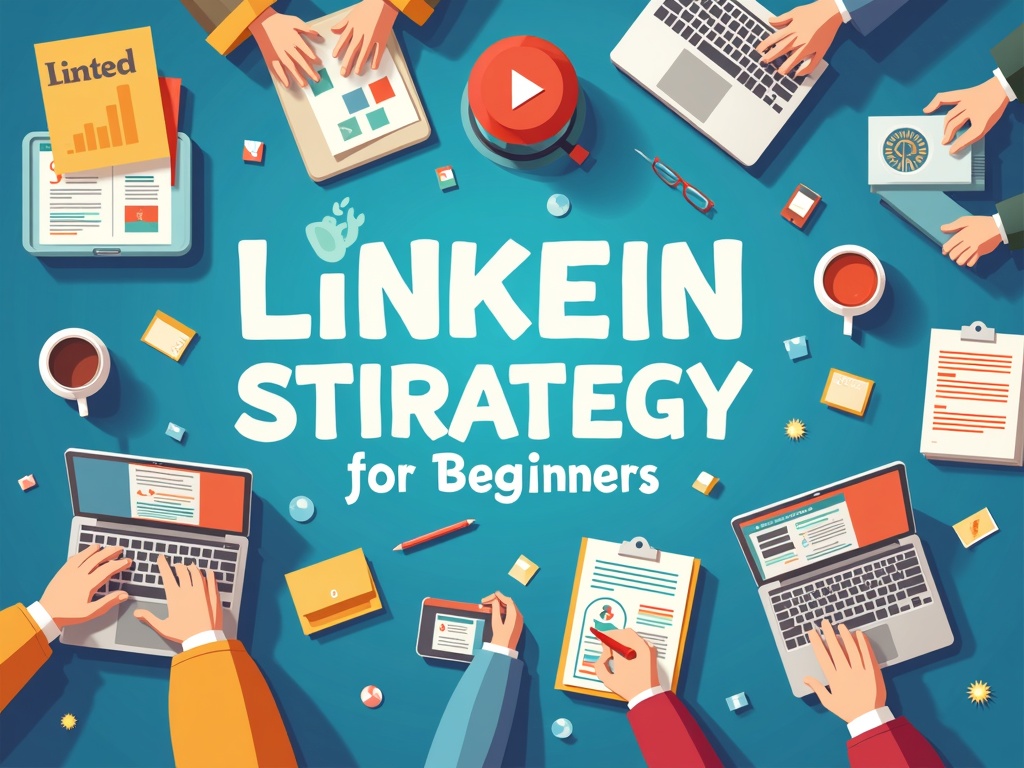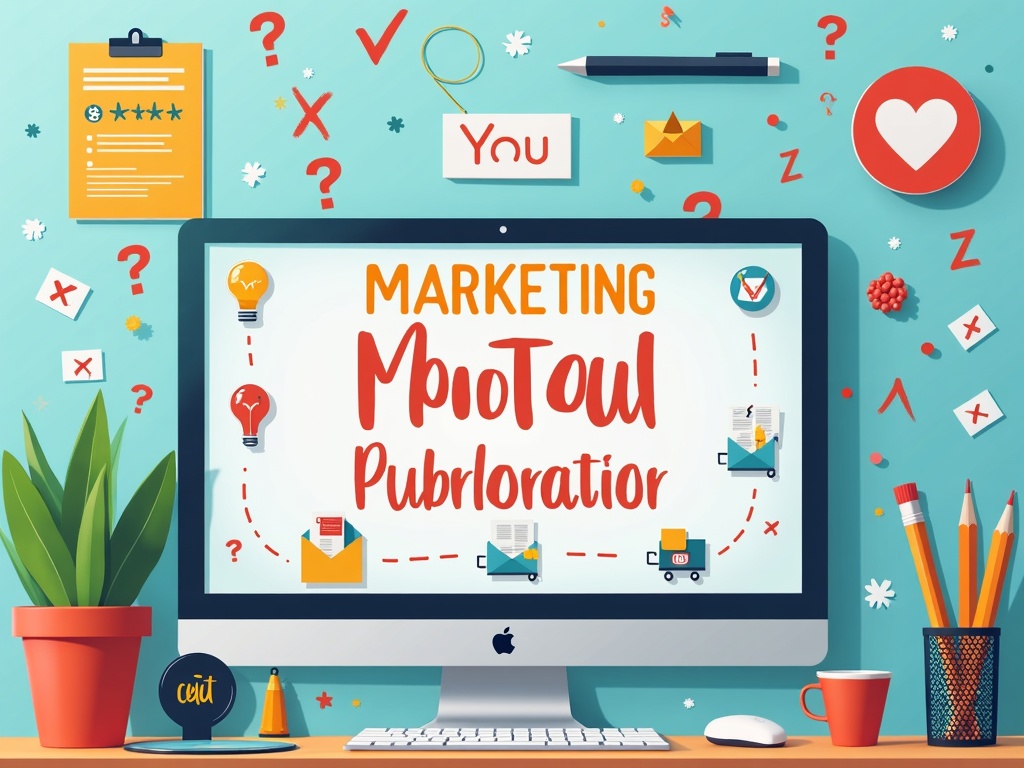Simple LinkedIn Strategy for Beginners: Marketing Without Tech Overwhelm
LinkedIn. The professional’s digital watering hole. But for many beginners, especially those who aren’t exactly tech wizards, it can feel less like a friendly networking event and more like being thrown into a crowded room with a megaphone and told to make connections! Fear not. This isn’t about becoming a social media guru overnight. This is about creating a *simple*, repeatable strategy that works for you, even if the word algorithm makes your eyes glaze over.
Why LinkedIn Matters (Even if You’re Not a Techie)
Before we dive into the how, let’s quickly address the why. Why should you, a busy individual perhaps already juggling a dozen other things, dedicate time to LinkedIn? Because it’s a powerful tool for:
- Building your professional brand: Think of it as your online resume, only much more dynamic and engaging. It allows you to showcase your skills, experience, and even your personality.
- Networking: Connect with colleagues, potential collaborators, industry leaders, and even future clients or employers.
- Generating leads: Yes, LinkedIn can be a lead generation machine, even for small businesses or solopreneurs.
- Staying informed: Follow industry news, trends, and discussions to stay ahead of the curve.
The best part? You don’t need a PhD in digital marketing to make it work. A simple, focused approach is often the most effective.
Your LinkedIn Profile: The Foundation of Your Strategy
Think of your profile as your digital storefront. It’s the first impression you make on anyone who finds you on LinkedIn. So, let’s make it a good one.
1. Professional (But Approachable) Photo
This isn’t the place for selfies or vacation snapshots. Use a recent photo where you look professional, friendly, and approachable. A headshot against a neutral background is ideal. Think about the message your picture is sending. Do you look trustworthy? Competent?
2. Compelling Headline
Your headline is what appears under your name in search results and on your profile. Don’t just list your job title. Use it to highlight your key skills and what you offer. For example, instead of Marketing Manager, try Marketing Manager | Helping Small Businesses Grow Online | Content Strategy & Social Media.
3. Summary (About Section) That Speaks to Your Audience
This is your chance to tell your story. Don’t just list your accomplishments. Explain *whyyou do what you do and *howyou can help others. Use keywords that your target audience might search for. Write in a conversational tone, as if you were speaking to someone face-to-face. Make it easy to read and avoid jargon.
4. Showcase Your Experience (Even if It’s Not Traditional)
List your work experience, but don’t just copy and paste your resume. Highlight your key achievements and quantify your results whenever possible. For example, instead of Managed social media accounts, try Increased social media engagement by 30% in six months through targeted content strategy. Even volunteer work, personal projects, or skills gained through online courses can relevantly show value.
5. Skills & Endorsements
Add relevant skills to your profile and ask colleagues or connections to endorse you for those skills. This adds credibility to your profile and helps you get found in searches.
Content is King (But Consistency is Queen)
Now that your profile is optimized, it’s time to start sharing content. But don’t panic! You don’t need to create elaborate videos or write lengthy articles every day. The key is to focus on providing valuable, relevant content consistently.
What to Post: Ideas for the Content-Shy
Staring at a blank screen is the bane of every creator’s existence. Here are ideas to get you started, no matter your industry:
- Share relevant articles: Found a useful article in your industry? Share it with your network and add your own thoughts or commentary.
- Ask questions: Engage your audience by asking questions related to your field.
- Share your insights: Offer your perspective on industry trends or news.
- Celebrate your successes (and failures): Share your wins, but also be transparent about the challenges you’ve faced and what you’ve learned. People appreciate authenticity.
- Behind the Scenes glimpses: Offer glimpses into your work. Consider sharing, if you’re working on something like a book, What I’m reading to research my next chapter and a snapshot of your research library. If you’re designing branding, Color palette exploration for my new client! is a great way to share.
How Often to Post: Finding Your Rhythm
There’s no magic number, but aim for consistency. Start with posting 2-3 times per week and see how your audience responds. Experiment with different types of content and posting times to find what works best for you. Don’t overwhelm yourself. It is far better to establish posting habits and scale them up, than to burn out in the first month.
Engaging With Others: It’s a Two-Way Street
LinkedIn is a *socialnetwork, so don’t just broadcast your own content. Take the time to engage with other people’s posts. Like, comment, and share content that you find valuable. Join relevant groups and participate in discussions. The more you engage with others, the more visible you’ll become.
Networking: Connecting With Intention
Connecting with people is at the heart of LinkedIn. But don’t just send out random connection requests. Be strategic and intentional.
Who to Connect With: Building Your Tribe
- Colleagues: Connect with your current and former colleagues.
- Industry peers: Connect with people in your field who you admire or who are doing interesting work.
- Potential clients or customers: Connect with people who might be interested in your products or services.
- Recruiters: Even if you’re not actively looking for a job, connecting with recruiters can be a valuable long-term strategy.
Personalize Your Connection Requests: Make It Meaningful
Instead of sending the default connection request, take a moment to personalize it. Explain why you want to connect and what you hope to gain from the connection. Mention something specific about their profile or their work that you admire.
Networking Etiquette: Be Respectful and Professional
Remember that LinkedIn is a professional platform. Be respectful of other people’s time and opinions. Avoid spamming or self-promoting too aggressively. Focus on building genuine relationships and providing value.
Measuring Your Success: Keep It Simple
You don’t need to be a data scientist to track your LinkedIn progress. Focus on a few key metrics to see what’s working and what’s not:
- Profile views: How many people are viewing your profile?
- Post engagement: How many likes, comments, and shares are your posts getting?
- Connection requests: How many people are requesting to connect with you?
- Website traffic: Are you driving traffic from LinkedIn to your website? (You’ll need to add a link in your profile and/or posts)
LinkedIn provides analytics that let you track all of these metrics. You can use this data to refine your strategy and improve your results. But do not spend so much time watching analytics that you lose time for actually creating and engaging!
Simple Tools & Tricks to Make LinkedIn Easier
Here are some simple, non-techie hacks to streamline your LinkedIn experience:
- Use a social media scheduler: Schedule your posts in advance to save time and stay consistent. (Buffer and Hootsuite are effective examples)
- Create a content calendar: Plan your content in advance to avoid last-minute scrambling.
- Use LinkedIn’s mobile app: Stay connected on the go with the LinkedIn mobile app.
- Save searches: If you regularly search for the same keywords or people, save your searches to save time.
- Use Hashtags Strategically: Use 2-3 relevant hashtags per post to increase visibility.
The Takeaway: Start Small, Stay Consistent, and Be Yourself
LinkedIn doesn’t have to be complicated. By focusing on the fundamentals – optimizing your profile, sharing valuable content, and networking strategically – you can build a strong professional presence and achieve your goals, even if you’re not a tech expert. The key is to start small, stay consistent, and be yourself. Let your personality shine through, and you’ll attract the right connections and opportunities.





